#Historical significance of the Avars
Text
Avars: What is their significance in Turkic culture?
Early History of the AvarsAvar Culture and SocietyAvar LanguageEvidence for different languages among the AvarsThe linguistic legacy of the AvarsAvar Contributions to SocietyAvar Migration and LegacyConclusionVideo: Avars (A history of the Bane of Byzantium)You may also like
The Avars are a Turkic people who have a rich history and culture. They have lived in various regions throughout history,…
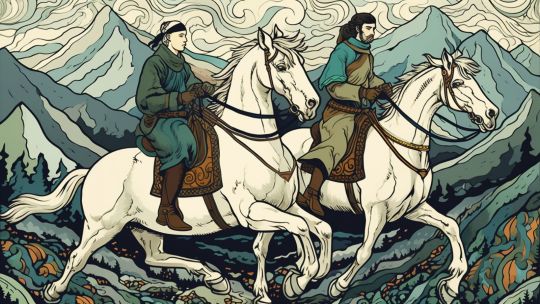
View On WordPress
#Avars and their cultural influence on the Turkic world#Avars and their impact on Turkic civilization#Avars in Turkic culture#Avars: Contributions to Turkic heritage#Avars: Influencers in Turkic cultural development#Exploring the cultural role of the Avars#Historical significance of the Avars#The legacy of the Avars in Turkic history#Turkic culture and the Avar people#Understanding the significance of Avars in Turkic traditions
1 note
·
View note
Text
Lombards: After the Lombard King Desiderius was defeated by Charlemagne in 773, the Lombards were forced to convert to Christianity and were subjected to Frankish rule. Charlemagne installed his own brother, Carloman, as the Lombard king and a Frankish archbishop as the head of the Lombard church.
Bavarians: Charlemagne fought a series of wars against the Bavarians in the late 8th and early 9th centuries, with the goal of expanding Frankish control over the region. The Bavarians were forcibly converted to Christianity and their local customs and traditions were suppressed.
There are accounts of the use of violence and coercion during Charlemagne's campaigns against the Bavarians in the late 8th and early 9th centuries, although the historical record is somewhat unclear and there is debate among scholars about the details of what actually occurred.
There are also reports of the destruction of pagan temples and shrines, as well as the forced baptism of large numbers of Bavarians during Charlemagne's campaigns. While the use of violence and coercion was not as widespread or systematic as in some other historical examples, it is clear that the Frankish campaigns against the Bavarians were marked by a significant degree of force and intimidation.
Overall, while there may not be a single event in Bavarian history that is comparable to the Massacre of Verden, there are certainly accounts of violence and coercion being used during the Christianization of the Bavarians under Charlemagne's rule.
Avars: The Avars were a nomadic people who had established a powerful empire in central Europe. Charlemagne launched a series of campaigns against them in the late 8th century, with the goal of weakening their power and influence. The Avars were eventually defeated and many were forced to convert to Christianity.
Frisians: The Frisians were a Germanic people who lived along the North Sea coast. Charlemagne launched several campaigns against them in the late 8th and early 9th centuries, with the goal of subjugating them to Frankish rule and converting them to Christianity. The Frisians were eventually defeated and forced to submit to Frankish authority.
Sources for these examples include the "Life of Charlemagne" by Einhard, as well as various chronicles and annals from the Carolingian period.
The Frisians, a Germanic people who inhabited the coastal regions of the Netherlands and Germany, were subject to forced Christianization by Charlemagne and his successors. According to the Royal Frankish Annals, in the year 689, Charlemagne's grandfather Charles Martel attacked and destroyed the Frisian town of Dorestad, taking many Frisian captives, whom he forced to convert to Christianity:
"And Charles captured Dorestad with its riches and destroyed it completely, and he brought a great number of Frisians, with their wives and children, to his home country, where he compelled them to accept the Christian faith and baptize." (Royal Frankish Annals, 689)
Furthermore, the Frisians were subject to the Capitulatio de partibus Saxoniae, a set of laws issued by Charlemagne in the late 8th century, which required the conversion of the Saxons and other Germanic peoples to Christianity under penalty of death:
"If any Saxons, Frisians or other pagans are discovered anywhere within the borders of the Franks, they shall be summoned to accept Christianity; and if, after they have been summoned, they refuse to do so, they shall be put to death." (Capitulatio de partibus Saxoniae, 785)
These laws were later reinforced by Charlemagne's son, Louis the Pious, who in 825 ordered that Frisians who refused to be baptized be expelled from their lands:
"...we also decree that if any man of that race...shall refuse to be baptized, he shall be forced by his peers and compelled by his lords to receive baptism, and if he persistently refuse, he shall be driven from the lands of the faithful and forfeit his property." (Capitulare Missorum, 825)
0 notes
Photo
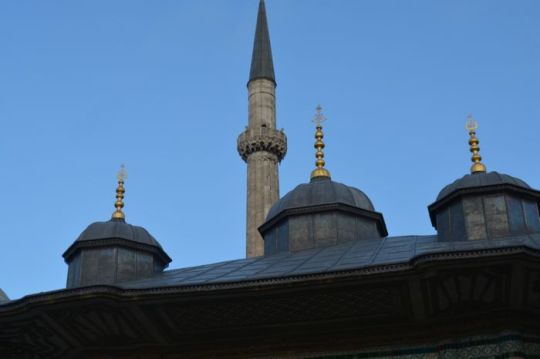
Against the Persians and Hellas
Thracian kingdoms waged wars against the Persians and Hellas for centuries. But the powerful Macedonian state of Philip II managed to crash them. It was his son, Alexander the Great, who quickly appreciated the military virtues of the Thracians and let them join the multilingual Macedonian army. After his death in 323 B. C. the Thracian king Seuth III succeeded to restore partially the former state and so the walls of the new capital city of Seuthopolis rose close to the location of present-day Bulgarian town of Kazanluk.
During the 3rd century B.C. the Romans managed to conquer the ancient Thracian lands. Later, in 74 B. C., a slave of Thracian origin who ‘graduated’ a gladiator school and became famous under the name of Spartacus headed the most continuous and mass insurrection in ancient Rome. That was the period of the so called Romanization of the Thracian world which continued until the 4th century A. D. when “The Great Migration of Peoples” began and the Thracians had to keep Celts, Huns, Goths, Avars and other barbarian tribes from invading their lands. In these circumstances the Thracians – partially Hellenized and Romanized, and having their rich and complex cultural heritage – had to stand before one of the most significant historical events for them: the disintegration of the Roman Empire in 395. In less than a century its western half was put to a collapse under the ravaging barbarian tribes from the north but the eastern part survived under the name of Byzantium with Constantinople as a capital city. Those were the days when the founders of the First Bulgarian Kingdom stepped Private Tours Balkan onto their future land…
Slavs and Proto-Bulgarians
During the 4lh to 7lh centuries the Slavs were the most multitudinous peoples in Europe.
They belonged to the Indo-European linguistic family and historians classify them usually in three main divisions: West Slavs include Poles, Czechs, Slovaks and the Wends who lived in Germany east of the river Elbe; East Slavs include Great Russians,
Little Russians (Ukrainians) and White Russians (Belorussians);
South Slavs include Serbs
Croats, Slovenes, Macedonians and Bulgarians. Originally the Slavs inhabited the lands to the north of the Carpathian Mountains but by the beginning of the 6th century Slavic tribes undertook marches to the south and crossed the Danube to loot in the territory of the Byzantine Empire. At that time a tribe of Tatar nomads, the Avars, established a kingdom (407- 653) in central Asia. In 558 they crossed the Urals and settled in Dacia after which started threatening the western countries and, of course, Constantinople. The Avars forced some of the Slavic tribes to settle permanently in various regions of the Balkan Peninsula. So were differentiated the “Bulgarian group” – which stayed in Moesia, Thrace and Macedonia – and the Serbo-Croatian group which gradually withdrew to the western half of the peninsula.
0 notes
Photo
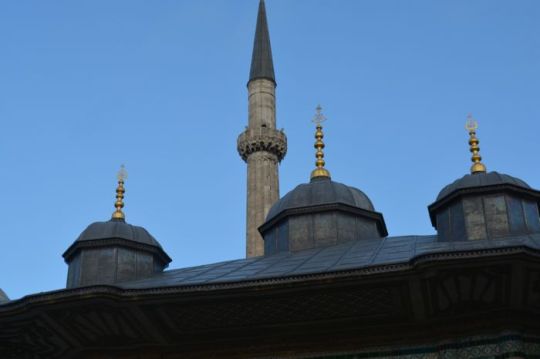
Against the Persians and Hellas
Thracian kingdoms waged wars against the Persians and Hellas for centuries. But the powerful Macedonian state of Philip II managed to crash them. It was his son, Alexander the Great, who quickly appreciated the military virtues of the Thracians and let them join the multilingual Macedonian army. After his death in 323 B. C. the Thracian king Seuth III succeeded to restore partially the former state and so the walls of the new capital city of Seuthopolis rose close to the location of present-day Bulgarian town of Kazanluk.
During the 3rd century B.C. the Romans managed to conquer the ancient Thracian lands. Later, in 74 B. C., a slave of Thracian origin who ‘graduated’ a gladiator school and became famous under the name of Spartacus headed the most continuous and mass insurrection in ancient Rome. That was the period of the so called Romanization of the Thracian world which continued until the 4th century A. D. when “The Great Migration of Peoples” began and the Thracians had to keep Celts, Huns, Goths, Avars and other barbarian tribes from invading their lands. In these circumstances the Thracians – partially Hellenized and Romanized, and having their rich and complex cultural heritage – had to stand before one of the most significant historical events for them: the disintegration of the Roman Empire in 395. In less than a century its western half was put to a collapse under the ravaging barbarian tribes from the north but the eastern part survived under the name of Byzantium with Constantinople as a capital city. Those were the days when the founders of the First Bulgarian Kingdom stepped Private Tours Balkan onto their future land…
Slavs and Proto-Bulgarians
During the 4lh to 7lh centuries the Slavs were the most multitudinous peoples in Europe.
They belonged to the Indo-European linguistic family and historians classify them usually in three main divisions: West Slavs include Poles, Czechs, Slovaks and the Wends who lived in Germany east of the river Elbe; East Slavs include Great Russians,
Little Russians (Ukrainians) and White Russians (Belorussians);
South Slavs include Serbs
Croats, Slovenes, Macedonians and Bulgarians. Originally the Slavs inhabited the lands to the north of the Carpathian Mountains but by the beginning of the 6th century Slavic tribes undertook marches to the south and crossed the Danube to loot in the territory of the Byzantine Empire. At that time a tribe of Tatar nomads, the Avars, established a kingdom (407- 653) in central Asia. In 558 they crossed the Urals and settled in Dacia after which started threatening the western countries and, of course, Constantinople. The Avars forced some of the Slavic tribes to settle permanently in various regions of the Balkan Peninsula. So were differentiated the “Bulgarian group” – which stayed in Moesia, Thrace and Macedonia – and the Serbo-Croatian group which gradually withdrew to the western half of the peninsula.
0 notes
Photo
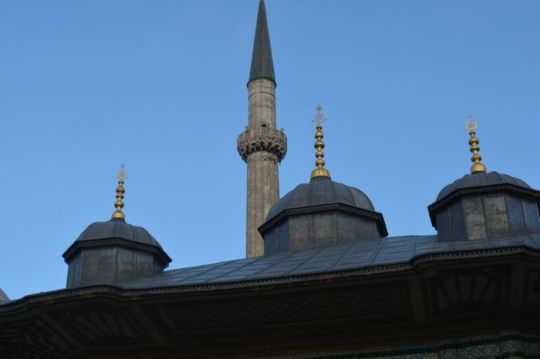
Against the Persians and Hellas
Thracian kingdoms waged wars against the Persians and Hellas for centuries. But the powerful Macedonian state of Philip II managed to crash them. It was his son, Alexander the Great, who quickly appreciated the military virtues of the Thracians and let them join the multilingual Macedonian army. After his death in 323 B. C. the Thracian king Seuth III succeeded to restore partially the former state and so the walls of the new capital city of Seuthopolis rose close to the location of present-day Bulgarian town of Kazanluk.
During the 3rd century B.C. the Romans managed to conquer the ancient Thracian lands. Later, in 74 B. C., a slave of Thracian origin who ‘graduated’ a gladiator school and became famous under the name of Spartacus headed the most continuous and mass insurrection in ancient Rome. That was the period of the so called Romanization of the Thracian world which continued until the 4th century A. D. when “The Great Migration of Peoples” began and the Thracians had to keep Celts, Huns, Goths, Avars and other barbarian tribes from invading their lands. In these circumstances the Thracians – partially Hellenized and Romanized, and having their rich and complex cultural heritage – had to stand before one of the most significant historical events for them: the disintegration of the Roman Empire in 395. In less than a century its western half was put to a collapse under the ravaging barbarian tribes from the north but the eastern part survived under the name of Byzantium with Constantinople as a capital city. Those were the days when the founders of the First Bulgarian Kingdom stepped Private Tours Balkan onto their future land…
Slavs and Proto-Bulgarians
During the 4lh to 7lh centuries the Slavs were the most multitudinous peoples in Europe.
They belonged to the Indo-European linguistic family and historians classify them usually in three main divisions: West Slavs include Poles, Czechs, Slovaks and the Wends who lived in Germany east of the river Elbe; East Slavs include Great Russians,
Little Russians (Ukrainians) and White Russians (Belorussians);
South Slavs include Serbs
Croats, Slovenes, Macedonians and Bulgarians. Originally the Slavs inhabited the lands to the north of the Carpathian Mountains but by the beginning of the 6th century Slavic tribes undertook marches to the south and crossed the Danube to loot in the territory of the Byzantine Empire. At that time a tribe of Tatar nomads, the Avars, established a kingdom (407- 653) in central Asia. In 558 they crossed the Urals and settled in Dacia after which started threatening the western countries and, of course, Constantinople. The Avars forced some of the Slavic tribes to settle permanently in various regions of the Balkan Peninsula. So were differentiated the “Bulgarian group” – which stayed in Moesia, Thrace and Macedonia – and the Serbo-Croatian group which gradually withdrew to the western half of the peninsula.
0 notes
Photo
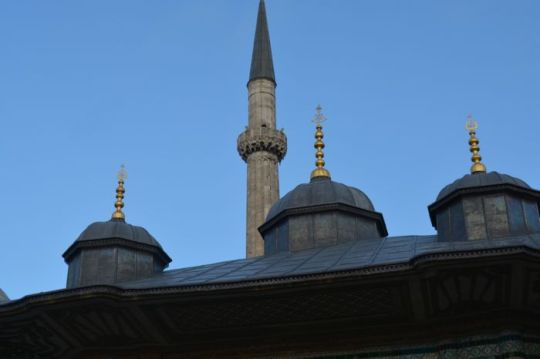
Against the Persians and Hellas
Thracian kingdoms waged wars against the Persians and Hellas for centuries. But the powerful Macedonian state of Philip II managed to crash them. It was his son, Alexander the Great, who quickly appreciated the military virtues of the Thracians and let them join the multilingual Macedonian army. After his death in 323 B. C. the Thracian king Seuth III succeeded to restore partially the former state and so the walls of the new capital city of Seuthopolis rose close to the location of present-day Bulgarian town of Kazanluk.
During the 3rd century B.C. the Romans managed to conquer the ancient Thracian lands. Later, in 74 B. C., a slave of Thracian origin who ‘graduated’ a gladiator school and became famous under the name of Spartacus headed the most continuous and mass insurrection in ancient Rome. That was the period of the so called Romanization of the Thracian world which continued until the 4th century A. D. when “The Great Migration of Peoples” began and the Thracians had to keep Celts, Huns, Goths, Avars and other barbarian tribes from invading their lands. In these circumstances the Thracians – partially Hellenized and Romanized, and having their rich and complex cultural heritage – had to stand before one of the most significant historical events for them: the disintegration of the Roman Empire in 395. In less than a century its western half was put to a collapse under the ravaging barbarian tribes from the north but the eastern part survived under the name of Byzantium with Constantinople as a capital city. Those were the days when the founders of the First Bulgarian Kingdom stepped Private Tours Balkan onto their future land…
Slavs and Proto-Bulgarians
During the 4lh to 7lh centuries the Slavs were the most multitudinous peoples in Europe.
They belonged to the Indo-European linguistic family and historians classify them usually in three main divisions: West Slavs include Poles, Czechs, Slovaks and the Wends who lived in Germany east of the river Elbe; East Slavs include Great Russians,
Little Russians (Ukrainians) and White Russians (Belorussians);
South Slavs include Serbs
Croats, Slovenes, Macedonians and Bulgarians. Originally the Slavs inhabited the lands to the north of the Carpathian Mountains but by the beginning of the 6th century Slavic tribes undertook marches to the south and crossed the Danube to loot in the territory of the Byzantine Empire. At that time a tribe of Tatar nomads, the Avars, established a kingdom (407- 653) in central Asia. In 558 they crossed the Urals and settled in Dacia after which started threatening the western countries and, of course, Constantinople. The Avars forced some of the Slavic tribes to settle permanently in various regions of the Balkan Peninsula. So were differentiated the “Bulgarian group” – which stayed in Moesia, Thrace and Macedonia – and the Serbo-Croatian group which gradually withdrew to the western half of the peninsula.
0 notes
Photo
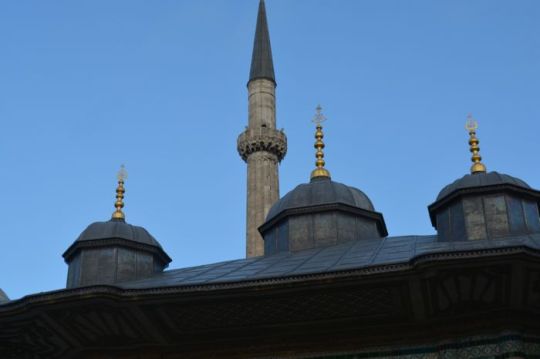
Against the Persians and Hellas
Thracian kingdoms waged wars against the Persians and Hellas for centuries. But the powerful Macedonian state of Philip II managed to crash them. It was his son, Alexander the Great, who quickly appreciated the military virtues of the Thracians and let them join the multilingual Macedonian army. After his death in 323 B. C. the Thracian king Seuth III succeeded to restore partially the former state and so the walls of the new capital city of Seuthopolis rose close to the location of present-day Bulgarian town of Kazanluk.
During the 3rd century B.C. the Romans managed to conquer the ancient Thracian lands. Later, in 74 B. C., a slave of Thracian origin who ‘graduated’ a gladiator school and became famous under the name of Spartacus headed the most continuous and mass insurrection in ancient Rome. That was the period of the so called Romanization of the Thracian world which continued until the 4th century A. D. when “The Great Migration of Peoples” began and the Thracians had to keep Celts, Huns, Goths, Avars and other barbarian tribes from invading their lands. In these circumstances the Thracians – partially Hellenized and Romanized, and having their rich and complex cultural heritage – had to stand before one of the most significant historical events for them: the disintegration of the Roman Empire in 395. In less than a century its western half was put to a collapse under the ravaging barbarian tribes from the north but the eastern part survived under the name of Byzantium with Constantinople as a capital city. Those were the days when the founders of the First Bulgarian Kingdom stepped Private Tours Balkan onto their future land…
Slavs and Proto-Bulgarians
During the 4lh to 7lh centuries the Slavs were the most multitudinous peoples in Europe.
They belonged to the Indo-European linguistic family and historians classify them usually in three main divisions: West Slavs include Poles, Czechs, Slovaks and the Wends who lived in Germany east of the river Elbe; East Slavs include Great Russians,
Little Russians (Ukrainians) and White Russians (Belorussians);
South Slavs include Serbs
Croats, Slovenes, Macedonians and Bulgarians. Originally the Slavs inhabited the lands to the north of the Carpathian Mountains but by the beginning of the 6th century Slavic tribes undertook marches to the south and crossed the Danube to loot in the territory of the Byzantine Empire. At that time a tribe of Tatar nomads, the Avars, established a kingdom (407- 653) in central Asia. In 558 they crossed the Urals and settled in Dacia after which started threatening the western countries and, of course, Constantinople. The Avars forced some of the Slavic tribes to settle permanently in various regions of the Balkan Peninsula. So were differentiated the “Bulgarian group” – which stayed in Moesia, Thrace and Macedonia – and the Serbo-Croatian group which gradually withdrew to the western half of the peninsula.
0 notes
Photo
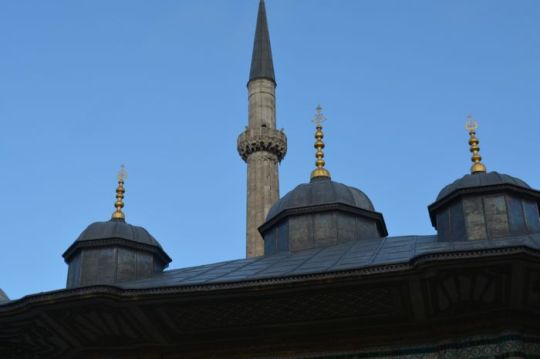
Against the Persians and Hellas
Thracian kingdoms waged wars against the Persians and Hellas for centuries. But the powerful Macedonian state of Philip II managed to crash them. It was his son, Alexander the Great, who quickly appreciated the military virtues of the Thracians and let them join the multilingual Macedonian army. After his death in 323 B. C. the Thracian king Seuth III succeeded to restore partially the former state and so the walls of the new capital city of Seuthopolis rose close to the location of present-day Bulgarian town of Kazanluk.
During the 3rd century B.C. the Romans managed to conquer the ancient Thracian lands. Later, in 74 B. C., a slave of Thracian origin who ‘graduated’ a gladiator school and became famous under the name of Spartacus headed the most continuous and mass insurrection in ancient Rome. That was the period of the so called Romanization of the Thracian world which continued until the 4th century A. D. when “The Great Migration of Peoples” began and the Thracians had to keep Celts, Huns, Goths, Avars and other barbarian tribes from invading their lands. In these circumstances the Thracians – partially Hellenized and Romanized, and having their rich and complex cultural heritage – had to stand before one of the most significant historical events for them: the disintegration of the Roman Empire in 395. In less than a century its western half was put to a collapse under the ravaging barbarian tribes from the north but the eastern part survived under the name of Byzantium with Constantinople as a capital city. Those were the days when the founders of the First Bulgarian Kingdom stepped Private Tours Balkan onto their future land…
Slavs and Proto-Bulgarians
During the 4lh to 7lh centuries the Slavs were the most multitudinous peoples in Europe.
They belonged to the Indo-European linguistic family and historians classify them usually in three main divisions: West Slavs include Poles, Czechs, Slovaks and the Wends who lived in Germany east of the river Elbe; East Slavs include Great Russians,
Little Russians (Ukrainians) and White Russians (Belorussians);
South Slavs include Serbs
Croats, Slovenes, Macedonians and Bulgarians. Originally the Slavs inhabited the lands to the north of the Carpathian Mountains but by the beginning of the 6th century Slavic tribes undertook marches to the south and crossed the Danube to loot in the territory of the Byzantine Empire. At that time a tribe of Tatar nomads, the Avars, established a kingdom (407- 653) in central Asia. In 558 they crossed the Urals and settled in Dacia after which started threatening the western countries and, of course, Constantinople. The Avars forced some of the Slavic tribes to settle permanently in various regions of the Balkan Peninsula. So were differentiated the “Bulgarian group” – which stayed in Moesia, Thrace and Macedonia – and the Serbo-Croatian group which gradually withdrew to the western half of the peninsula.
0 notes
Photo
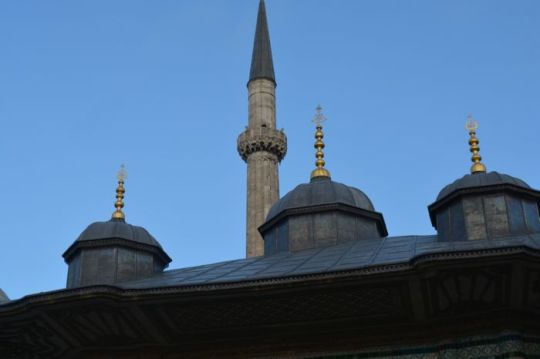
Against the Persians and Hellas
Thracian kingdoms waged wars against the Persians and Hellas for centuries. But the powerful Macedonian state of Philip II managed to crash them. It was his son, Alexander the Great, who quickly appreciated the military virtues of the Thracians and let them join the multilingual Macedonian army. After his death in 323 B. C. the Thracian king Seuth III succeeded to restore partially the former state and so the walls of the new capital city of Seuthopolis rose close to the location of present-day Bulgarian town of Kazanluk.
During the 3rd century B.C. the Romans managed to conquer the ancient Thracian lands. Later, in 74 B. C., a slave of Thracian origin who ‘graduated’ a gladiator school and became famous under the name of Spartacus headed the most continuous and mass insurrection in ancient Rome. That was the period of the so called Romanization of the Thracian world which continued until the 4th century A. D. when “The Great Migration of Peoples” began and the Thracians had to keep Celts, Huns, Goths, Avars and other barbarian tribes from invading their lands. In these circumstances the Thracians – partially Hellenized and Romanized, and having their rich and complex cultural heritage – had to stand before one of the most significant historical events for them: the disintegration of the Roman Empire in 395. In less than a century its western half was put to a collapse under the ravaging barbarian tribes from the north but the eastern part survived under the name of Byzantium with Constantinople as a capital city. Those were the days when the founders of the First Bulgarian Kingdom stepped Private Tours Balkan onto their future land…
Slavs and Proto-Bulgarians
During the 4lh to 7lh centuries the Slavs were the most multitudinous peoples in Europe.
They belonged to the Indo-European linguistic family and historians classify them usually in three main divisions: West Slavs include Poles, Czechs, Slovaks and the Wends who lived in Germany east of the river Elbe; East Slavs include Great Russians,
Little Russians (Ukrainians) and White Russians (Belorussians);
South Slavs include Serbs
Croats, Slovenes, Macedonians and Bulgarians. Originally the Slavs inhabited the lands to the north of the Carpathian Mountains but by the beginning of the 6th century Slavic tribes undertook marches to the south and crossed the Danube to loot in the territory of the Byzantine Empire. At that time a tribe of Tatar nomads, the Avars, established a kingdom (407- 653) in central Asia. In 558 they crossed the Urals and settled in Dacia after which started threatening the western countries and, of course, Constantinople. The Avars forced some of the Slavic tribes to settle permanently in various regions of the Balkan Peninsula. So were differentiated the “Bulgarian group” – which stayed in Moesia, Thrace and Macedonia – and the Serbo-Croatian group which gradually withdrew to the western half of the peninsula.
0 notes
Photo
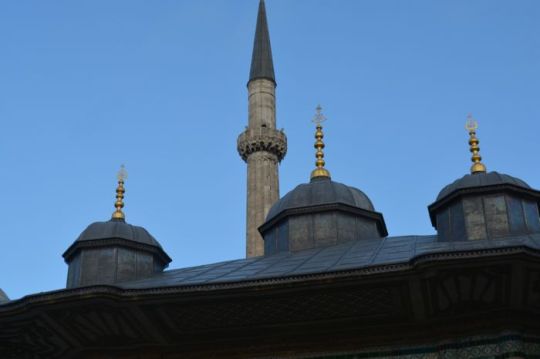
Against the Persians and Hellas
Thracian kingdoms waged wars against the Persians and Hellas for centuries. But the powerful Macedonian state of Philip II managed to crash them. It was his son, Alexander the Great, who quickly appreciated the military virtues of the Thracians and let them join the multilingual Macedonian army. After his death in 323 B. C. the Thracian king Seuth III succeeded to restore partially the former state and so the walls of the new capital city of Seuthopolis rose close to the location of present-day Bulgarian town of Kazanluk.
During the 3rd century B.C. the Romans managed to conquer the ancient Thracian lands. Later, in 74 B. C., a slave of Thracian origin who ‘graduated’ a gladiator school and became famous under the name of Spartacus headed the most continuous and mass insurrection in ancient Rome. That was the period of the so called Romanization of the Thracian world which continued until the 4th century A. D. when “The Great Migration of Peoples” began and the Thracians had to keep Celts, Huns, Goths, Avars and other barbarian tribes from invading their lands. In these circumstances the Thracians – partially Hellenized and Romanized, and having their rich and complex cultural heritage – had to stand before one of the most significant historical events for them: the disintegration of the Roman Empire in 395. In less than a century its western half was put to a collapse under the ravaging barbarian tribes from the north but the eastern part survived under the name of Byzantium with Constantinople as a capital city. Those were the days when the founders of the First Bulgarian Kingdom stepped Private Tours Balkan onto their future land…
Slavs and Proto-Bulgarians
During the 4lh to 7lh centuries the Slavs were the most multitudinous peoples in Europe.
They belonged to the Indo-European linguistic family and historians classify them usually in three main divisions: West Slavs include Poles, Czechs, Slovaks and the Wends who lived in Germany east of the river Elbe; East Slavs include Great Russians,
Little Russians (Ukrainians) and White Russians (Belorussians);
South Slavs include Serbs
Croats, Slovenes, Macedonians and Bulgarians. Originally the Slavs inhabited the lands to the north of the Carpathian Mountains but by the beginning of the 6th century Slavic tribes undertook marches to the south and crossed the Danube to loot in the territory of the Byzantine Empire. At that time a tribe of Tatar nomads, the Avars, established a kingdom (407- 653) in central Asia. In 558 they crossed the Urals and settled in Dacia after which started threatening the western countries and, of course, Constantinople. The Avars forced some of the Slavic tribes to settle permanently in various regions of the Balkan Peninsula. So were differentiated the “Bulgarian group” – which stayed in Moesia, Thrace and Macedonia – and the Serbo-Croatian group which gradually withdrew to the western half of the peninsula.
0 notes
Photo
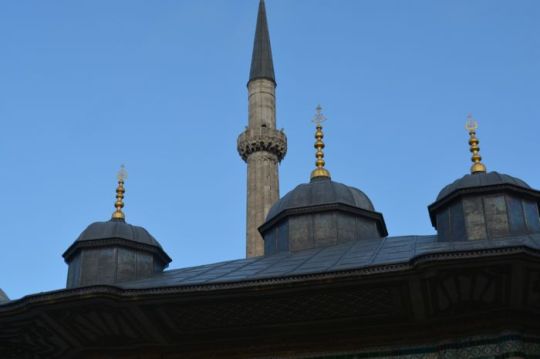
Against the Persians and Hellas
Thracian kingdoms waged wars against the Persians and Hellas for centuries. But the powerful Macedonian state of Philip II managed to crash them. It was his son, Alexander the Great, who quickly appreciated the military virtues of the Thracians and let them join the multilingual Macedonian army. After his death in 323 B. C. the Thracian king Seuth III succeeded to restore partially the former state and so the walls of the new capital city of Seuthopolis rose close to the location of present-day Bulgarian town of Kazanluk.
During the 3rd century B.C. the Romans managed to conquer the ancient Thracian lands. Later, in 74 B. C., a slave of Thracian origin who ‘graduated’ a gladiator school and became famous under the name of Spartacus headed the most continuous and mass insurrection in ancient Rome. That was the period of the so called Romanization of the Thracian world which continued until the 4th century A. D. when “The Great Migration of Peoples” began and the Thracians had to keep Celts, Huns, Goths, Avars and other barbarian tribes from invading their lands. In these circumstances the Thracians – partially Hellenized and Romanized, and having their rich and complex cultural heritage – had to stand before one of the most significant historical events for them: the disintegration of the Roman Empire in 395. In less than a century its western half was put to a collapse under the ravaging barbarian tribes from the north but the eastern part survived under the name of Byzantium with Constantinople as a capital city. Those were the days when the founders of the First Bulgarian Kingdom stepped Private Tours Balkan onto their future land…
Slavs and Proto-Bulgarians
During the 4lh to 7lh centuries the Slavs were the most multitudinous peoples in Europe.
They belonged to the Indo-European linguistic family and historians classify them usually in three main divisions: West Slavs include Poles, Czechs, Slovaks and the Wends who lived in Germany east of the river Elbe; East Slavs include Great Russians,
Little Russians (Ukrainians) and White Russians (Belorussians);
South Slavs include Serbs
Croats, Slovenes, Macedonians and Bulgarians. Originally the Slavs inhabited the lands to the north of the Carpathian Mountains but by the beginning of the 6th century Slavic tribes undertook marches to the south and crossed the Danube to loot in the territory of the Byzantine Empire. At that time a tribe of Tatar nomads, the Avars, established a kingdom (407- 653) in central Asia. In 558 they crossed the Urals and settled in Dacia after which started threatening the western countries and, of course, Constantinople. The Avars forced some of the Slavic tribes to settle permanently in various regions of the Balkan Peninsula. So were differentiated the “Bulgarian group” – which stayed in Moesia, Thrace and Macedonia – and the Serbo-Croatian group which gradually withdrew to the western half of the peninsula.
0 notes
Photo

Against the Persians and Hellas
Thracian kingdoms waged wars against the Persians and Hellas for centuries. But the powerful Macedonian state of Philip II managed to crash them. It was his son, Alexander the Great, who quickly appreciated the military virtues of the Thracians and let them join the multilingual Macedonian army. After his death in 323 B. C. the Thracian king Seuth III succeeded to restore partially the former state and so the walls of the new capital city of Seuthopolis rose close to the location of present-day Bulgarian town of Kazanluk.
During the 3rd century B.C. the Romans managed to conquer the ancient Thracian lands. Later, in 74 B. C., a slave of Thracian origin who ‘graduated’ a gladiator school and became famous under the name of Spartacus headed the most continuous and mass insurrection in ancient Rome. That was the period of the so called Romanization of the Thracian world which continued until the 4th century A. D. when “The Great Migration of Peoples” began and the Thracians had to keep Celts, Huns, Goths, Avars and other barbarian tribes from invading their lands. In these circumstances the Thracians – partially Hellenized and Romanized, and having their rich and complex cultural heritage – had to stand before one of the most significant historical events for them: the disintegration of the Roman Empire in 395. In less than a century its western half was put to a collapse under the ravaging barbarian tribes from the north but the eastern part survived under the name of Byzantium with Constantinople as a capital city. Those were the days when the founders of the First Bulgarian Kingdom stepped Private Tours Balkan onto their future land…
Slavs and Proto-Bulgarians
During the 4lh to 7lh centuries the Slavs were the most multitudinous peoples in Europe.
They belonged to the Indo-European linguistic family and historians classify them usually in three main divisions: West Slavs include Poles, Czechs, Slovaks and the Wends who lived in Germany east of the river Elbe; East Slavs include Great Russians,
Little Russians (Ukrainians) and White Russians (Belorussians);
South Slavs include Serbs
Croats, Slovenes, Macedonians and Bulgarians. Originally the Slavs inhabited the lands to the north of the Carpathian Mountains but by the beginning of the 6th century Slavic tribes undertook marches to the south and crossed the Danube to loot in the territory of the Byzantine Empire. At that time a tribe of Tatar nomads, the Avars, established a kingdom (407- 653) in central Asia. In 558 they crossed the Urals and settled in Dacia after which started threatening the western countries and, of course, Constantinople. The Avars forced some of the Slavic tribes to settle permanently in various regions of the Balkan Peninsula. So were differentiated the “Bulgarian group” – which stayed in Moesia, Thrace and Macedonia – and the Serbo-Croatian group which gradually withdrew to the western half of the peninsula.
0 notes
Photo

Against the Persians and Hellas
Thracian kingdoms waged wars against the Persians and Hellas for centuries. But the powerful Macedonian state of Philip II managed to crash them. It was his son, Alexander the Great, who quickly appreciated the military virtues of the Thracians and let them join the multilingual Macedonian army. After his death in 323 B. C. the Thracian king Seuth III succeeded to restore partially the former state and so the walls of the new capital city of Seuthopolis rose close to the location of present-day Bulgarian town of Kazanluk.
During the 3rd century B.C. the Romans managed to conquer the ancient Thracian lands. Later, in 74 B. C., a slave of Thracian origin who ‘graduated’ a gladiator school and became famous under the name of Spartacus headed the most continuous and mass insurrection in ancient Rome. That was the period of the so called Romanization of the Thracian world which continued until the 4th century A. D. when “The Great Migration of Peoples” began and the Thracians had to keep Celts, Huns, Goths, Avars and other barbarian tribes from invading their lands. In these circumstances the Thracians – partially Hellenized and Romanized, and having their rich and complex cultural heritage – had to stand before one of the most significant historical events for them: the disintegration of the Roman Empire in 395. In less than a century its western half was put to a collapse under the ravaging barbarian tribes from the north but the eastern part survived under the name of Byzantium with Constantinople as a capital city. Those were the days when the founders of the First Bulgarian Kingdom stepped Private Tours Balkan onto their future land…
Slavs and Proto-Bulgarians
During the 4lh to 7lh centuries the Slavs were the most multitudinous peoples in Europe.
They belonged to the Indo-European linguistic family and historians classify them usually in three main divisions: West Slavs include Poles, Czechs, Slovaks and the Wends who lived in Germany east of the river Elbe; East Slavs include Great Russians,
Little Russians (Ukrainians) and White Russians (Belorussians);
South Slavs include Serbs
Croats, Slovenes, Macedonians and Bulgarians. Originally the Slavs inhabited the lands to the north of the Carpathian Mountains but by the beginning of the 6th century Slavic tribes undertook marches to the south and crossed the Danube to loot in the territory of the Byzantine Empire. At that time a tribe of Tatar nomads, the Avars, established a kingdom (407- 653) in central Asia. In 558 they crossed the Urals and settled in Dacia after which started threatening the western countries and, of course, Constantinople. The Avars forced some of the Slavic tribes to settle permanently in various regions of the Balkan Peninsula. So were differentiated the “Bulgarian group” – which stayed in Moesia, Thrace and Macedonia – and the Serbo-Croatian group which gradually withdrew to the western half of the peninsula.
0 notes
Photo

Against the Persians and Hellas
Thracian kingdoms waged wars against the Persians and Hellas for centuries. But the powerful Macedonian state of Philip II managed to crash them. It was his son, Alexander the Great, who quickly appreciated the military virtues of the Thracians and let them join the multilingual Macedonian army. After his death in 323 B. C. the Thracian king Seuth III succeeded to restore partially the former state and so the walls of the new capital city of Seuthopolis rose close to the location of present-day Bulgarian town of Kazanluk.
During the 3rd century B.C. the Romans managed to conquer the ancient Thracian lands. Later, in 74 B. C., a slave of Thracian origin who ‘graduated’ a gladiator school and became famous under the name of Spartacus headed the most continuous and mass insurrection in ancient Rome. That was the period of the so called Romanization of the Thracian world which continued until the 4th century A. D. when “The Great Migration of Peoples” began and the Thracians had to keep Celts, Huns, Goths, Avars and other barbarian tribes from invading their lands. In these circumstances the Thracians – partially Hellenized and Romanized, and having their rich and complex cultural heritage – had to stand before one of the most significant historical events for them: the disintegration of the Roman Empire in 395. In less than a century its western half was put to a collapse under the ravaging barbarian tribes from the north but the eastern part survived under the name of Byzantium with Constantinople as a capital city. Those were the days when the founders of the First Bulgarian Kingdom stepped Private Tours Balkan onto their future land…
Slavs and Proto-Bulgarians
During the 4lh to 7lh centuries the Slavs were the most multitudinous peoples in Europe.
They belonged to the Indo-European linguistic family and historians classify them usually in three main divisions: West Slavs include Poles, Czechs, Slovaks and the Wends who lived in Germany east of the river Elbe; East Slavs include Great Russians,
Little Russians (Ukrainians) and White Russians (Belorussians);
South Slavs include Serbs
Croats, Slovenes, Macedonians and Bulgarians. Originally the Slavs inhabited the lands to the north of the Carpathian Mountains but by the beginning of the 6th century Slavic tribes undertook marches to the south and crossed the Danube to loot in the territory of the Byzantine Empire. At that time a tribe of Tatar nomads, the Avars, established a kingdom (407- 653) in central Asia. In 558 they crossed the Urals and settled in Dacia after which started threatening the western countries and, of course, Constantinople. The Avars forced some of the Slavic tribes to settle permanently in various regions of the Balkan Peninsula. So were differentiated the “Bulgarian group” – which stayed in Moesia, Thrace and Macedonia – and the Serbo-Croatian group which gradually withdrew to the western half of the peninsula.
0 notes
Photo
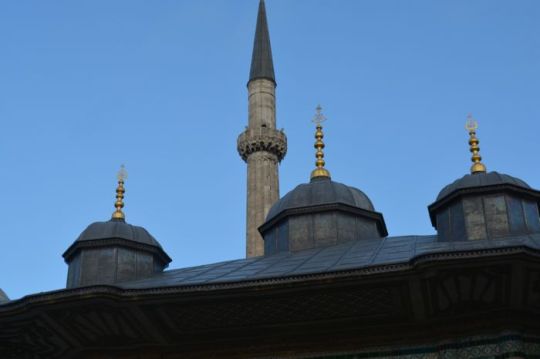
Against the Persians and Hellas
Thracian kingdoms waged wars against the Persians and Hellas for centuries. But the powerful Macedonian state of Philip II managed to crash them. It was his son, Alexander the Great, who quickly appreciated the military virtues of the Thracians and let them join the multilingual Macedonian army. After his death in 323 B. C. the Thracian king Seuth III succeeded to restore partially the former state and so the walls of the new capital city of Seuthopolis rose close to the location of present-day Bulgarian town of Kazanluk.
During the 3rd century B.C. the Romans managed to conquer the ancient Thracian lands. Later, in 74 B. C., a slave of Thracian origin who ‘graduated’ a gladiator school and became famous under the name of Spartacus headed the most continuous and mass insurrection in ancient Rome. That was the period of the so called Romanization of the Thracian world which continued until the 4th century A. D. when “The Great Migration of Peoples” began and the Thracians had to keep Celts, Huns, Goths, Avars and other barbarian tribes from invading their lands. In these circumstances the Thracians – partially Hellenized and Romanized, and having their rich and complex cultural heritage – had to stand before one of the most significant historical events for them: the disintegration of the Roman Empire in 395. In less than a century its western half was put to a collapse under the ravaging barbarian tribes from the north but the eastern part survived under the name of Byzantium with Constantinople as a capital city. Those were the days when the founders of the First Bulgarian Kingdom stepped Private Tours Balkan onto their future land…
Slavs and Proto-Bulgarians
During the 4lh to 7lh centuries the Slavs were the most multitudinous peoples in Europe.
They belonged to the Indo-European linguistic family and historians classify them usually in three main divisions: West Slavs include Poles, Czechs, Slovaks and the Wends who lived in Germany east of the river Elbe; East Slavs include Great Russians,
Little Russians (Ukrainians) and White Russians (Belorussians);
South Slavs include Serbs
Croats, Slovenes, Macedonians and Bulgarians. Originally the Slavs inhabited the lands to the north of the Carpathian Mountains but by the beginning of the 6th century Slavic tribes undertook marches to the south and crossed the Danube to loot in the territory of the Byzantine Empire. At that time a tribe of Tatar nomads, the Avars, established a kingdom (407- 653) in central Asia. In 558 they crossed the Urals and settled in Dacia after which started threatening the western countries and, of course, Constantinople. The Avars forced some of the Slavic tribes to settle permanently in various regions of the Balkan Peninsula. So were differentiated the “Bulgarian group” – which stayed in Moesia, Thrace and Macedonia – and the Serbo-Croatian group which gradually withdrew to the western half of the peninsula.
0 notes
Photo



The Gold Solocha Comb
A magnificent sculpted golden comb made by a Greek sculptor, with a crest showing Scythian warriors in battle is one of the great treasures of the Hermitage Museum in St. Petersburg, Russia.
The golden ornament, known around the world as “the Solocha comb,” was found in what is now Ukraine in 1913.
The crest, of Scythian origin, is believed to have been made by a Greek master for a Scythian aristocrat. It was discovered in the grave of an ancient Scythian leader.
The Scythians were an ancient nomadic people who lived for the most part on the Eurasian steppes of Kazakhstan, the Russian steppes of the Siberian, Ural, Volga, and Southern regions, and eastern Ukraine.
Scythian burial included remains of body sheathed in gold
Classical-era Scythians dominated the Pontic steppe from approximately the 7th century BC until the 3rd century BC. These people also referred to as Pontic Scythians, were part of the wider Scythian culture, stretching all the way across the vast grasslands of the Eurasian Steppe.
In a broader sense, the term Scythian has also been used for all early Eurasian nomads, although the validity of such terminology is controversial.
The comb was found in the burial mound known as the Solokha Kurgan, constructed along the left bank of the Dnieper River, near Nikopol in central Ukraine. Dating back to the early 4th century BC, it contained two royal Scythian tombs. The find was notable because it confirmed the historicity of Herodotus’ account of the Scythians.
The intact lateral tomb there yielded spectacular treasures, including the remains of a male ruler, which were completely covered in gold. The most notable burial object found with him was the golden comb with its extremely detailed group of three fighting warriors and their horses.
The Scythians are generally believed to have been of Iranian origin; they spoke a language of the Scythian branch of the Iranian languages and practiced a variant of ancient Iranian religion.
Among the earliest peoples to master mounted warfare, the Scythians replaced the Cimmerians as the dominant power on the Pontic steppe in the 8th century BC. During this time they and related peoples came to dominate the entire Eurasian Steppe from the Carpathian Mountains in the west to the Ordos Plateau in the east, creating what has been called the first Central Asian nomadic empire.
Based in what is modern-day Ukraine and southern Russia, they called themselves Scoloti (Ancient Greek: Σκώλοτοι) and were led by a nomadic warrior aristocracy known as the Royal Scythians.
Golden comb only one of the treasures created by Scythian metalworkers
The Scythians played an important part in the operation of the Silk Road, the vast trade network connecting Greece, Persia, India and China, which most likely contributed to the prosperity of those civilizations.
Incredibly highly-skilled metalworkers made portable decorative objects for the rulers, forming the glorious history of Scythian metalworking. These objects constituted an extremely distinctive type of Scythian art.
The name of the ancient Scythian peoples survives in the region known as Scythia. Early authors used the word Scythian for many groups who were actually unrelated to the original Scythians, including Huns, Goths, Turkic peoples, Avars, Khazars, and other unnamed nomads.
Although the Greek historian Herodotus refers to Scythian “kings”, even using their names at times, like most tribal peoples, Scythian rule actually took the form of a confederation of tribes and chiefs.
Herodotus states that while a king or chief represented the Scythian nation in dealings with other peoples, subchiefs would also have a significant say in affairs.
By Patricia Claus.
#The Gold Solocha Comb#art#artist#art work#art nnews#greek art#The Scythians#history#history news#ancient history#ancient culture#ancient civilizations#gold#treasure#grave#ancient tomb
45 notes
·
View notes